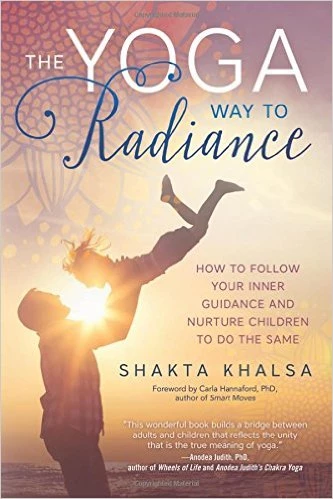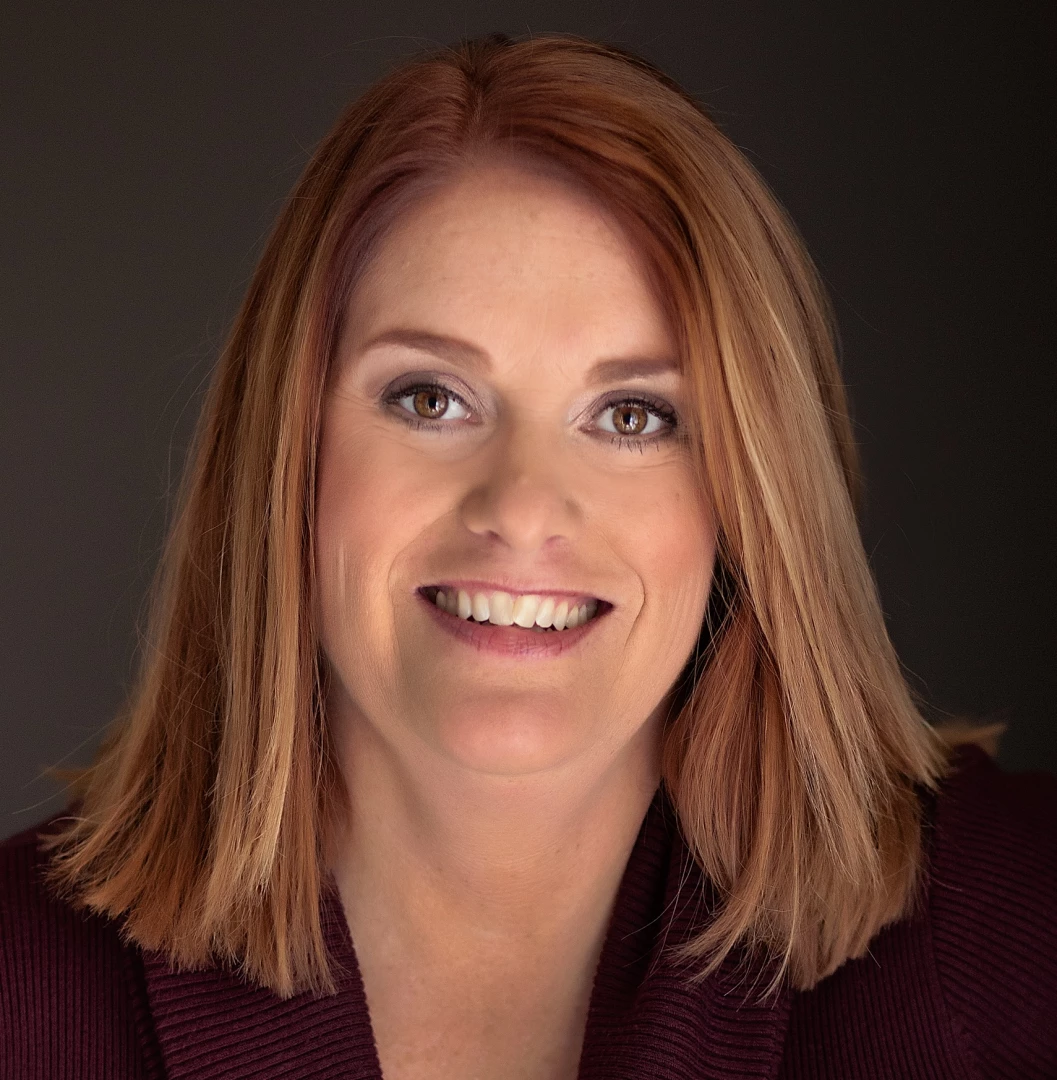Yoga for Kids: The Yoga Way to Radiance – A Book Review

This year Shakta Khalsa celebrates 40 years of working with yoga and children. She has also released her latest book The Yoga Way To Radiance: How To Follow Your Inner Guidance and Nurture Children To Do The Same.
“My ultimate goal is healthy, happy, whole children and adults, followed by world peace! My short-term goal is that more people will be able to connect with their true core self, and teach and raise children in ways so they are able to maintain the radiance and wisdom they come into life with,” said Khalsa.
 The Yoga Way To Radiance is a guide to mindful parenting. Khalsa reminds parents and caregivers to keep the focus on what’s most important; our own internal state. We must be connected to our own inner spirit in order to meet the needs of our children’s inner spirit.
The Yoga Way To Radiance is a guide to mindful parenting. Khalsa reminds parents and caregivers to keep the focus on what’s most important; our own internal state. We must be connected to our own inner spirit in order to meet the needs of our children’s inner spirit.
Our inner home is built on knowing that there is only one relationship to attend to—the one between you and You, your personal self and your greater authentic Self … In the practice of that realization, you will empower yourself to move in a positive direction.
Whether you are feeling guilty, angry, hopeful, or totally blissful, befriending yourself, no matter what emotional state you find yourself in, is paramount to the process of inner growth. You see, when we befriend ourselves, we feel better, and that means we are closer to home, to our true Self. The change in how we feel also means that there is a change in our state of consciousness, our vibration.
From an energetic point of view, befriending ourselves even a little changes our frequency, and tunes us into a world that looks a bit better. There is a subtle change in our relationships with children and everyone else; the feelings between us are a bit lighter, a bit brighter. It is the Law of Attraction in action, because what you put out, you get back. (Page 85)
Tips for Handling the Everyday Challenges of Parenting
Sounds easy right? Khalsa acknowledges that parenting isn’t always easy. But we do always have a choice in how we feel and how we parent. Khalsa says that although challenges can be difficult, when you change the way you look at the challenge, you not only relieve yourself of the discomfort the challenge is causing, but you also bring yourself into alignment with your authentic Self.
“The bottom line really comes down to, how much do you want to feel good?” said Khalsa. “Because it is empowering to know that we do have a choice at every moment, and we can choose to feel better in this moment than we did in the previous one.”
Khalsa recommends what she calls the bathroom meditation for frustrated or overwhelmed parents.
“As long as your child or children are safe, go into the bathroom and do five or more deep breaths in this pattern: inhale for five seconds, hold for five seconds, exhale for five seconds and repeat,” she says.
Khalsa says by connecting with her inner self first she gains guidance in how to handle the everyday challenges.
How the Energy of Our Thoughts and Attitudes Affect Children
She reminds the reader regularly that our thoughts and attitudes create an energetic signal to which children are very sensitive and quick to react. I know when my own children ask me what’s wrong and I respond with “nothing,” they don’t believe me. They then become anxious themselves worried about me. A few deep yoga breaths are usually enough to calm me down and explain the situation in an age-appropriate way.
I have also adapted her “don’t bite the bait” technique into my own home with my children. When my children are arguing or instigating with each other, I can defuse the situation with a reminder to don’t bite the bait.
Khalsa says the idea of “don’t bite the bait” is a reminder to stop for a moment and see if we are allowing ourselves to be triggered, or if we are centered and responding.
“We all ‘bite the bait’ sometimes, whether we are children, parents, teachers, adults relating to other adults or challenging situations that present themselves to us. In seeing that our children are ‘biting the bait,’ we certainly can remind them in a playful way,” she says. “As well, it gives us the opportunity to see if we are doing the same with them.”
Recommended Yoga Poses and Meditations to Practice with Children
Each chapter of The Yoga Way To Radiance ends with a suggested list of yoga poses and meditations that are both easy to do and fun for children.
She recommends growling as you Bear Walk, walking opposite arm and leg from Downward-Facing Dog, and then hibernating in Child’s Pose. A positive affirmation chant of “I am brave, I am bold, My own spirit I can hold” utilizes both movement and music, activating both hemispheres of the brain and taps into children’s natural love of singing and movement. Chapter 5 also includes an asana practice to activate the spinal fluid and create new neural pathways.
As a certified Montessori teacher and founder of a Montessori School and founder of Radiant Child Yoga, Khalsa has been instrumental in teaching schoolteachers how to adapt yoga into their classrooms, even in areas where traditional yoga isn’t as commonly accepted.
“So in those cases, the teachers can simply have the children close their eyes and listen to the breath coming in sounding like waves on the ocean coming to the shore, and breathe out feeling that the waves are going back out to the sea. They can have children stand up and place their hands on the desk in a modified version of Downward Facing Dog, and stretch,” says Khalsa. “And they never need to call it yoga at all! The effect is what is important, not the naming of the technique.”
A teacher’s internal state is just as important as a parent’s internal state when engaging children. The book includes examples of teachers working with special-needs students, or as Khalsa prefers to call them, children with special intentions, having great success adapting yoga techniques to their teaching methods.
Khalsa’s work with sensory-special children, such as those with autism, has reinforced her belief that children are more aligned with their own inner guide than adults. She says the challenges these sensory-special children face can instead be seen as learning moments to listen to our own intuition as parents and caregivers.
The Yoga Way To Radiance: How To Follow Your Inner Guidance and Nurture Children To Do The Same is a wonderful guide for parents, caregivers and teachers striving to lead a mindful, authentic life.
Read more from YogaUOnline and Shakta Khalsa – Yoga Self-Care for Parents & Caregivers of Autisitc Children.
Study with Shakta Kaur Khalsa and YogaUOnline – Yoga for Children.
 Shakta Khalsa is an E-RYT 500, AMS certified Montessori teacher and the author of five other yoga books, CDs and DVDs. The Yoga Way To Radiance: How To Follow Your Inner Guidance and Nurture Children To Do The Same can be found on Amazon or where books are sold.
Shakta Khalsa is an E-RYT 500, AMS certified Montessori teacher and the author of five other yoga books, CDs and DVDs. The Yoga Way To Radiance: How To Follow Your Inner Guidance and Nurture Children To Do The Same can be found on Amazon or where books are sold.
 Jennifer Williams-Fields E-RYT 200 is passionate about writing, yoga, traveling, public speaking and being a fabulous single momma to six super kids. Doing it all at one time, however, is her great struggle. She has been teaching yoga since 2005 and writing since she first picked up a crayon. Although her life is a sort of organized chaos, she loves every minute of the craziness and is grateful for all she’s learned along the way. Her first book “Creating A Joyful Life: The Lessons I Learned From Yoga and My Mom” is now available on Amazon. She has had her essays featured on Yahoo! and Dr. Oz The Good Life. She is a regular writer for Elephant Journal Magazine, YourTango and YogaUOnline. See more from Jennifer at jenniferwilliamsfields.com
Jennifer Williams-Fields E-RYT 200 is passionate about writing, yoga, traveling, public speaking and being a fabulous single momma to six super kids. Doing it all at one time, however, is her great struggle. She has been teaching yoga since 2005 and writing since she first picked up a crayon. Although her life is a sort of organized chaos, she loves every minute of the craziness and is grateful for all she’s learned along the way. Her first book “Creating A Joyful Life: The Lessons I Learned From Yoga and My Mom” is now available on Amazon. She has had her essays featured on Yahoo! and Dr. Oz The Good Life. She is a regular writer for Elephant Journal Magazine, YourTango and YogaUOnline. See more from Jennifer at jenniferwilliamsfields.com



